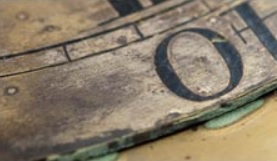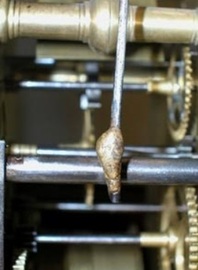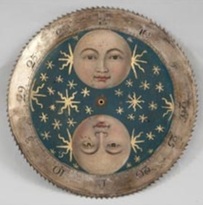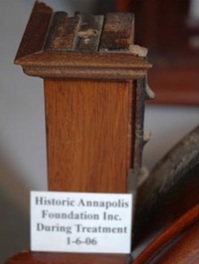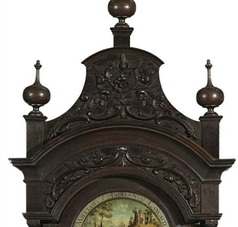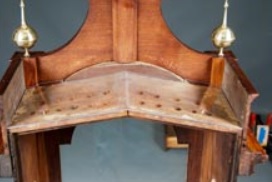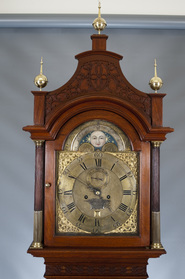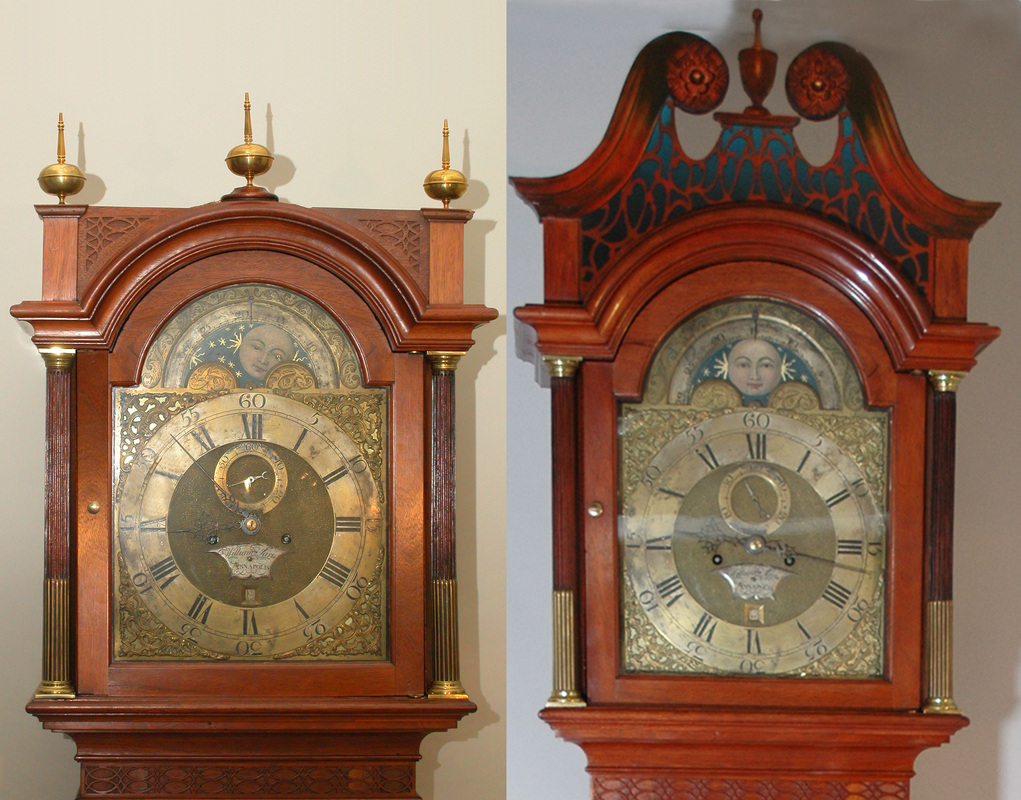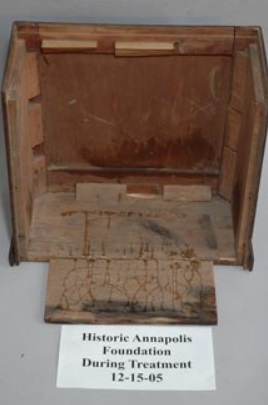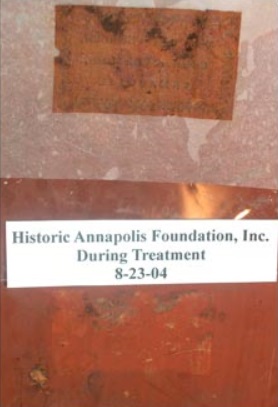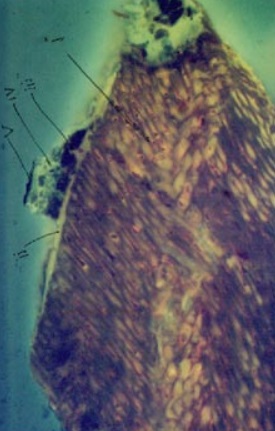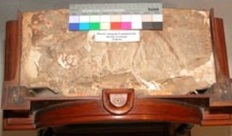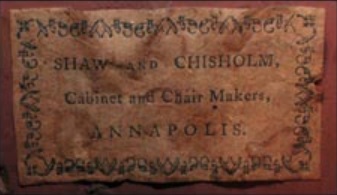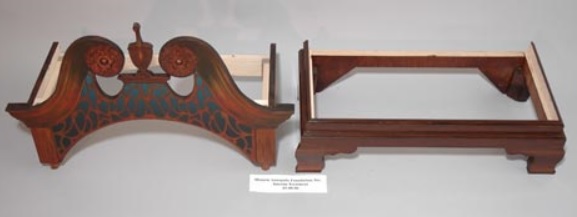The first image below is a Philadelphia Chippendale carved mahogany tall-case clock, Ca. 1766 to 1775. The notable feature of this clock is the applied floral carving adorning the front of the bonnet.
Other evidence on the clock helped to determine the bonnet's form. The size of the shaped molding above the bonnet door and the returns were a visual clue that the shape of the bonnet progressed inward from the point of the molding upward, precluding the existence of a swan's neck pediment which by definition has a curved molding that extends beyond the two plinth blocks. This is based on architectural and furniture designs of the period. These images below show the progression that took place during the various treatment phases of this significant tall case clock.
Other evidence on the clock helped to determine the bonnet's form. The size of the shaped molding above the bonnet door and the returns were a visual clue that the shape of the bonnet progressed inward from the point of the molding upward, precluding the existence of a swan's neck pediment which by definition has a curved molding that extends beyond the two plinth blocks. This is based on architectural and furniture designs of the period. These images below show the progression that took place during the various treatment phases of this significant tall case clock.
Below from Left to Right: These image show the condition of the clock movement and case during the treatment in 2004 and in 2009. The first image shows the partial disassembly of the case. The second image shows the removal of original paper label for the treatment by a paper conservator. The third image is of a cross-sectional flourencents depicting 5 coating layers including the orginal natural resin spirit varnish. The fourth image shows the four layers of wallpaper and fabric on the bonnet covering the sounding holes.
Above: Image of an original paper label from the first partnership
of John Shaw and Archibald Chisholm 1772 to 1776 attached to the back of the clock.
of John Shaw and Archibald Chisholm 1772 to 1776 attached to the back of the clock.





